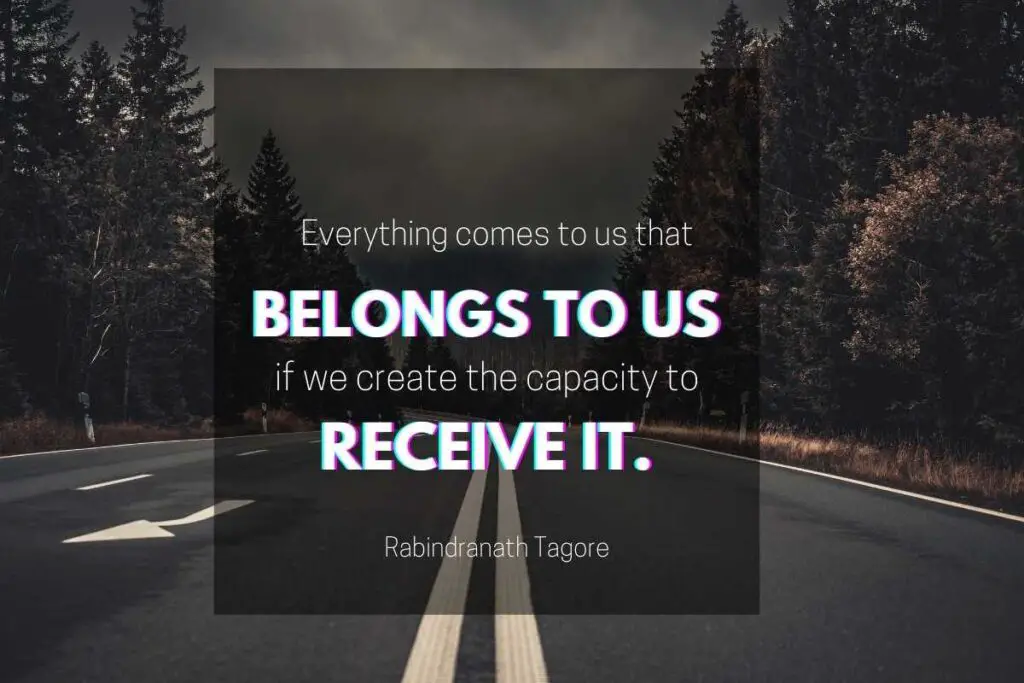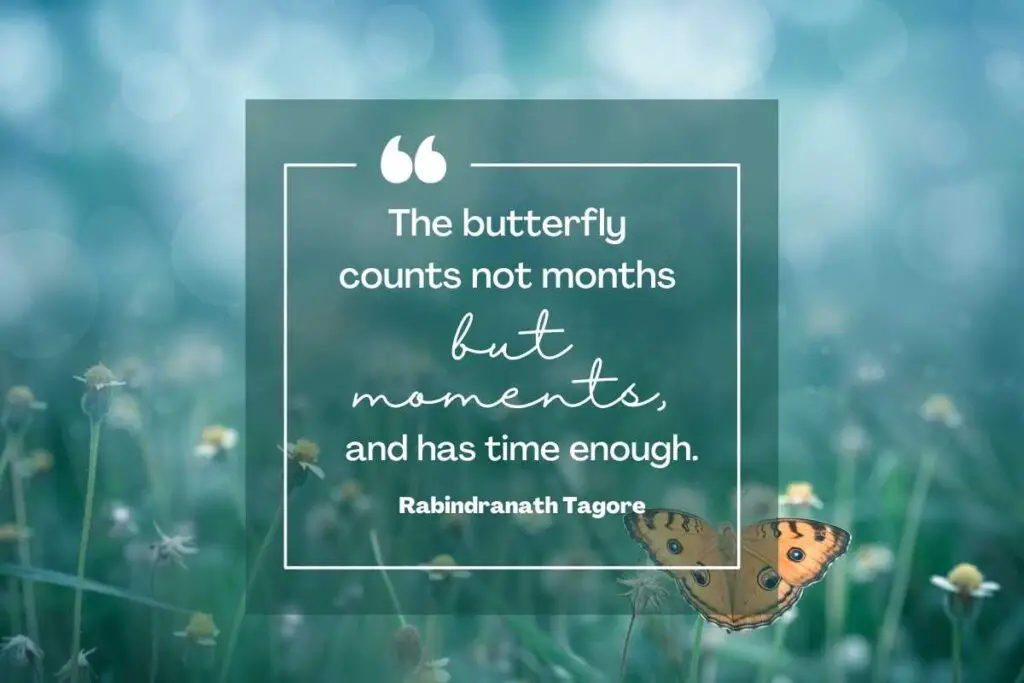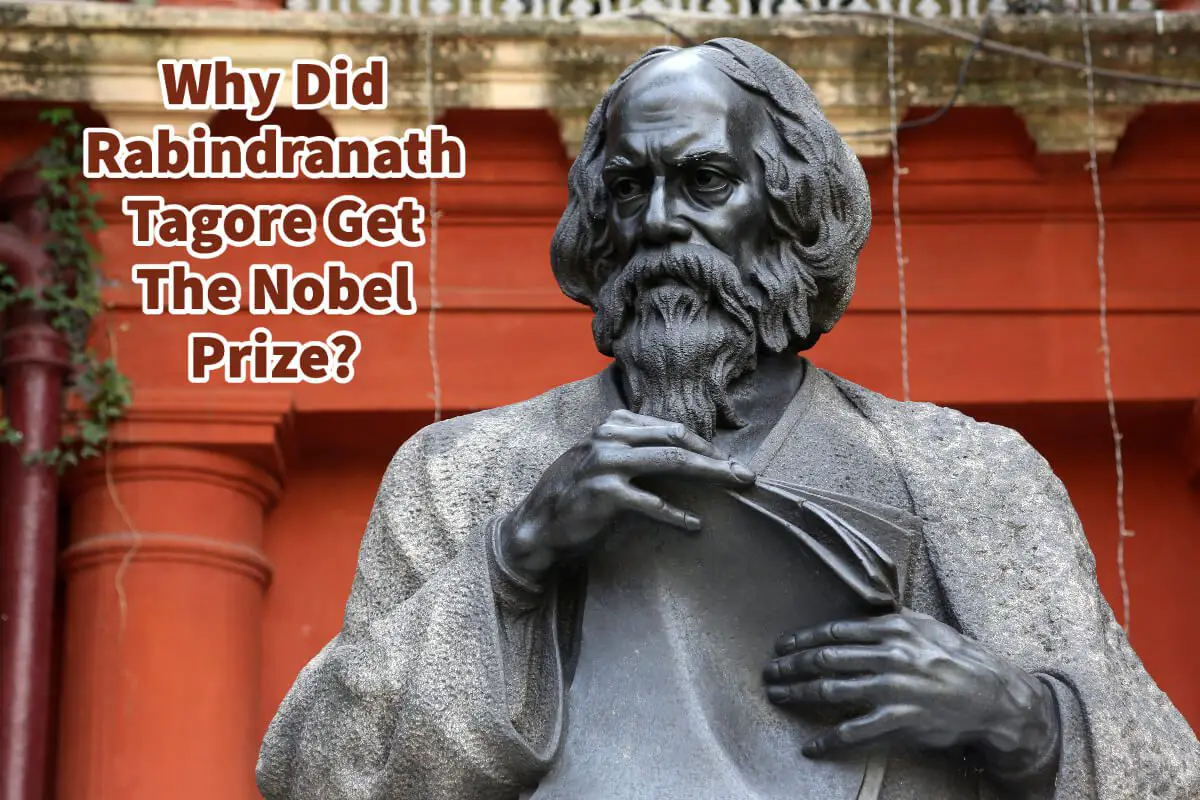I recently listened to a podcast and heard a quote by the Indian poet Rabindranath Tagore. My friend Carrie who also listened to the same podcast sent me some information on him; since hearing his quote, I have been fascinated by Rabindranath Tagore and his life and poetry.
Rabindranath Tagore was the first non-European to receive the Noble for Literature in 1913. Since then, his poetry, prose, and writings have been read by millions. He was not only a poet but also a writer, artist, composer, and social reformer. Rabindranath Tagore Is a critical Indian writer and artist.
Table of Contents
- Why Did Rabindranath Get The Nobel Prize?
- What Is Rabindranath Tagore’s Biography?
- Why is Rabindranath Tagore Famous?
- What Is Rabindranath Tagore’s Real Name?
- What Are Some Rabindranath Famous Quotes?
- Related Questions
Why Did Rabindranath Get The Nobel Prize?
Rabindranath Tagore (1861 to 1941) received the Nobel Prize in Literature in 1913 for his work in literature and poetry. He was the first non – European lyricist to win the Nobel Prize in Literature.
The Nobel Prize said this about his contributions to literature and why he received the Noble Prize for Literature in 1913:
“The Nobel Prize in Literature 1913 was awarded to Rabindranath Tagore ‘because of his profoundly sensitive, fresh and beautiful verse, by which, with consummate skill, he has made his poetic thought, expressed in his own English words, a part of the literature of the West.”
Nobel Prize
Rabindranath Tagore’s writing was known to be rooted in both Indian and Western traditions and learning; this gave him a unique perspective between Asia and the West. He was known to write poetry, song, stories, and even dramas.
His writing included social issues, philosophy, the portrayal of ordinary men, women, and children, and sometimes some literary criticism. One of the themes that ran through his writings was the peace and harmony of the human soul and nature. He wrote in both Bengali and English.
Besides his writings, he was also a painter that mixed Indian art with Contextual Modernism and was an active social reformer. He was also a composer of music.
What Is Rabindranath Tagore’s Biography?
Rabindranath Tagore’s life can be divided into four main eras: his early life, his early adult life, which was mainly in Shelaidaha, his mid-adult life in Santiniketan, and his twilight years.
Rabindranath Tagore’s Early Life (1861 – 1878)
Rabindranath Tagore was born in Calcutta, India, on May 7, 1861. He was the youngest of thirteen surviving children.
His family had some money as they lived in a manor house; his family was at the forefront of the Bengal renaissance movement. As his mother had died when he was young, he was raised mainly by servants.
Rabindranath Tagore largely avoided classroom learning and preferred to roam the family’s manor or nearby areas. At a young age, he toured India with his father, so he gained an in-depth perspective of India from a very young age.
Rabindranath Tagore was self-taught as he read biographies, studied history, astronomy, science, and Sanskrit, and studied classical Indian poetry.
At a very young age, he started to write poetry.
Rabindranath Tagore – Life in Shelaidaha (Present-day Bangladesh) – (1878 – 1901)
Rabindranath Tagore’s father wanted his son to become a barrister, so he sent Rabindranath Tagore to Brighton, England, to study. He briefly studied law at the University College of London but then left school to continue his independent study of English literature.
In 1880 he left England and returned to Bengal to manage his estate Shelaidaha; his estate was located in present-day Bangladesh. He continued to publish poems, stories, and novels regularly.
In 1883 he married the 10-year-old Mrinalini Devi (1873 to 1902): marrying young girls was a common practice in India at the time, as was an arranged marriage. The two had five children, two of who died in childbirth.
Rabindranath Tagore – Santiniketan (1901 – 1932)
In 1901 Rabindranath Tagore moved to Santiniketan. It was here that his wife died in 1902 and his father in 1905.
He continued to publish many books, poems, and stories and gained a following from Bengali and foreign readers. He started translating many of his books into English. On a trip to London, he started sharing his literature with some of his admirers, such as William Butler Yeats and Ezra Weston Loomis Pound.
His writings began to gain popularity in England and around the world; in 1913, he learned that he had won the Nobel Prize for literature.
Rabindranath Tagore – The Twilight Years (1932 – 1941)
Rabindranath Tagore continued to write poetry, prose, and other writings in the last years of his life. He continued writing even though the previous five years of his life were marked by chronic and constant pain and long periods of illness.
On July 30, 1941, he wrote his last poem – just seven days before his death at age 80. His final poem was more of a farewell to the world; he wrote:
I’m lost in the middle of my birthday. I want my friends, their touch, with the earth’s last love. I will take life’s final offering, I will take the human’s last blessing. Today my sack is empty. I have given completely whatever I had to give. In return if I receive anything—some love, some forgiveness—then I will take it with me when I step on the boat that crosses to the festival of the wordless end.
Rabindranath Tagore
Why is Rabindranath Tagore Famous?
Rabindranath Tagore is famous for his poetry and prose. In 1913 he was the first non-European to be awarded the Nobel Prize for Literature, which would have been an enormous accomplishment for the day.
Rabindranath Tagore was also a highly prolific artist. He was known to paint artwork; he also composed the national anthems for both India and Bangladesh.
Rabindranath Tagore is an educator, social reformer, philosopher, and artist. In India, he is regarded as a significant national figure; his importance rivals that of the anti-colonial nationalist Mahatma Gandhi (1869-1948)
What Is Rabindranath Tagore’s Real Name?
Rabindranath Tagore was born Rabindranath Thakur. The name Tagore was anglicized from Thakur to Tagore. His family’s original surname was ”Kushari,” but then it changed to Thakur and Tagore.
What Are Some Rabindranath Famous Quotes?
Rabindranath Tagore was a profound and essential thinker. His writings left us with many thoughts, prose, and words of wisdom.
Below are some of our favorite Rabindranath Tagore quotes.
“Clouds come floating into my life, no longer to carry rain or usher storm, but to add color
Rabindranath Tagore
to my sunset sky.”

“Everything comes to us that belongs to us if we create the capacity to receive it.”
Rabindranath Tagore
“Every child comes with the message that God is not yet discouraged of man.”
Rabindranath Tagore
“Love is an endless mystery, for it has nothing else to explain it.”
Rabindranath Tagore
“If you shut the door to all errors, truth will be shut out.”
Rabindranath Tagore
I slept and dreamt that life was joy. I awoke and saw that life was service. I acted and behold, service was joy.

The butterfly counts not months but moments, and has time enough.
Rabindranath Tagore
At A Bus On A Dusty Road, we talk about everything about travel, life, sailing, and ex-pat living. We are all about “Living Life As A Global Citizen.” We explore social, cultural, and economic issues and travel.
We would love to have you be part of our community. Sign up for our newsletter to keep up-to-date by clicking here. If you have any questions, you can contact me, Anita, by clicking here.
Listen to our Podcast called Dusty Roads. You can find it on all major podcast platforms. Try out listening to one of our podcasts by clicking here.
Subscribe to our A Bus On A Dusty Road YouTube Channel filled with great videos and information by clicking here.
Related Questions
Mongolia’s Genghis Khan Statue: Mongolia’s Love for Genghis Khan
The Genghis Khan Statue Complex is outside Ulaanbaatar, Mongolia. This statue commemorates the Mongolian leader, Genghis Khan, who ruled Mongolia in the early 1200s. Despite his challenging childhood, Genghis Khan rose to become one of the greatest and most influential leaders of his time. Genghis Khan and his army conquered many parts of the world, including part of China, to the present-day Capsian Sea area.
By clicking here, you can discover Mongolia’s Genghis Khan Statue: Mongolia’s Love for Genghis Khan.
How Tall Was Genghis Khan And Other Facts
When history talks about the famous Mongolian warrior Genghis Khan, they talk about him as a giant or someone who was extremely tall. Even today in Mongolia, you can see a statue outside Ullanabaator that shows a highly tall Genghis Khan.
By clicking here, you can discover How Tall Was Genghis Khan And Other Facts.
Why Do Frank Lloyd Wright Buildings Have Low Ceilings?
Frank Lloyd Wright believed in compression and expansion when designing his buildings. Some spaces were lower to give a feeling of compression, and others were higher to feel expansive. But Frank Lloyd Wright was also notorious for basing the scale of his ceilings upon his height, which he recorded on his passport as 5 feet and 8.5 inches tall.
You can find out more by reading our blog Why Do Frank Lloyd Wright Buildings Have Low Ceilings? by clicking here.

